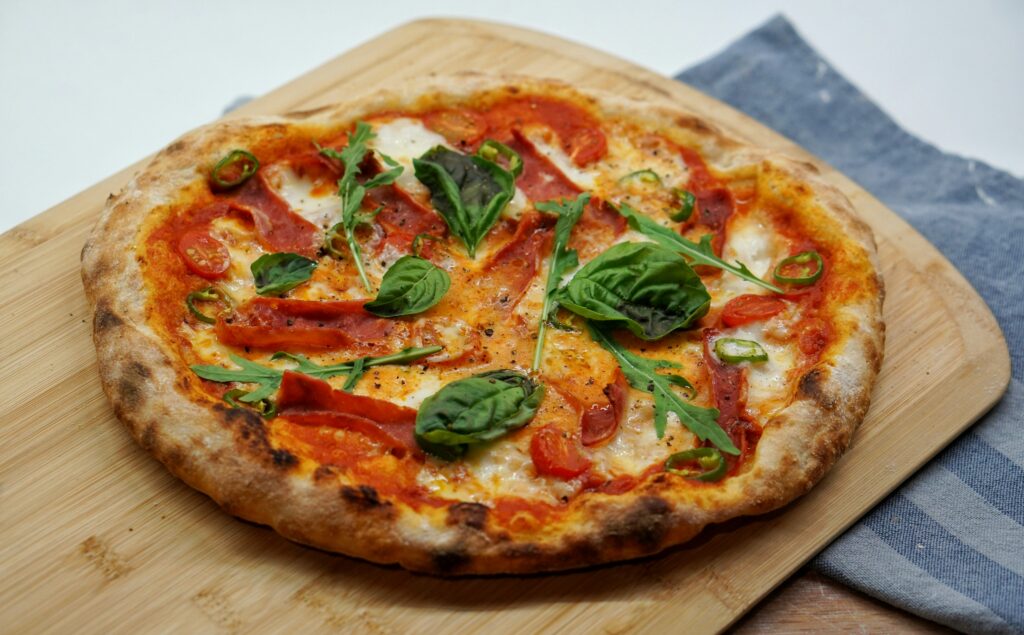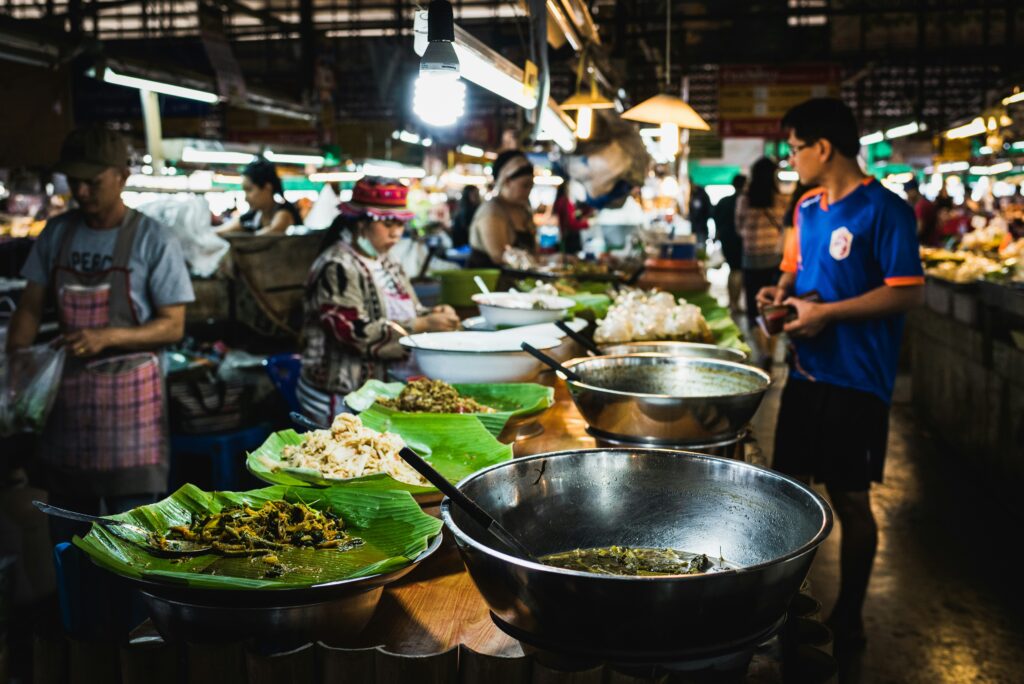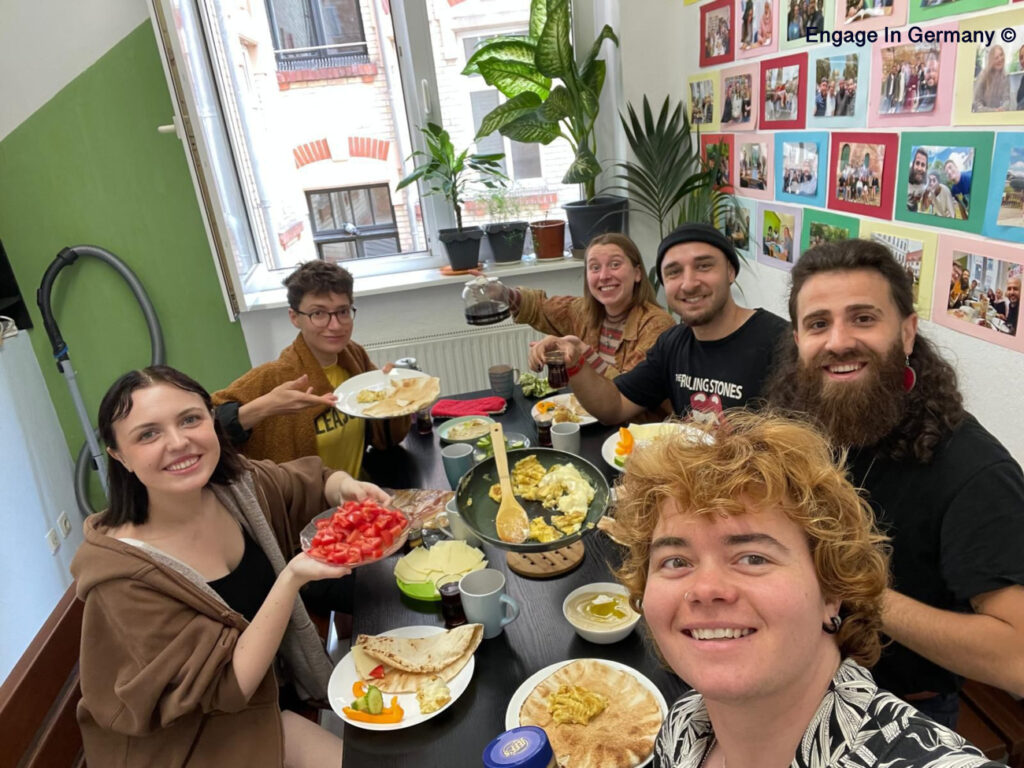Germany’s food scene is not only rich in traditional dishes but also a diverse melting pot of global influences, making it a paradise for food lovers. While quintessential German meals like Wurst, Schnitzel, and Eintopf continue to hold their place in the hearts of locals, foreign cuisines have carved out a major space in the country’s culinary landscape. In fact, in many cities, foreign food options often outshine traditional German fare, offering a dynamic mix of authentic and localized flavors.
Italian Cuisine – The Crowd’s Favorite
By far, Italian food is the most popular non-German cuisine, with Italian restaurants found in virtually every corner of the country. The range spans from authentic trattorias offering traditional pasta dishes, fresh seafood, and classic Italian desserts to more Germanized pizza shops catering to local tastes. These places often serve pizza with a thicker crust and creative toppings that are more in line with German preferences. Nonetheless, Italian food, whether authentic or adapted, is a staple in Germany, loved for its familiar flavors and comfort.

The Burger Boom
American cuisine, or at least its fast-food version, has a solid foothold in Germany, particularly in the form of burgers. While the traditional hamburger hails from the United States, Germany has embraced it with enthusiasm. Gourmet burger joints offering craft burgers with locally sourced ingredients are just as common as large American fast-food chains. These eateries provide a mix of classic American-style burgers and German twists, often incorporating regional ingredients such as Bavarian mustard or pretzel buns.
Vietnamese Cuisine and the “Asian” Experience
Vietnamese food has grown increasingly popular in Germany over the past few decades. Authentic Vietnamese restaurants offering pho, fresh spring rolls, and bahn mi sandwiches can be found in major cities like Berlin, Frankfurt, and Hamburg. However, Vietnamese-run restaurants often serve much more than just Vietnamese food. These establishments frequently offer a pan-Asian menu that includes dishes from China, Thailand, Japan, and even Korea, although the recipes are often adapted to local German tastes. The result is a unique German-Asian fusion cuisine, which combines the flavors of East Asia with a European sensibility. For example, sushi rolls might be filled with ingredients that appeal more to local palates, such as smoked salmon or cream cheese.

Greek and Indian Cuisine – The German Way
Greek and Indian restaurants are also commonly found throughout Germany. Greek food, known for dishes like gyros, souvlaki, and moussaka, is widely popular, though it is often adjusted to appeal to German tastes. Portions tend to be larger, and the flavors, particularly the spices, are toned down to suit local palates. Indian food follows a similar pattern. While you can find some restaurants serving more authentic curries and tandoori dishes, many places offer milder versions with less spice and more cream to accommodate German tastes.
Turkish Cuisine: The Iconic Döner Kebab
While Turkish cuisine is famous for its rich and varied flavors, in Germany, it’s mostly synonymous with Döner kebab. This dish, despite its Turkish roots, has evolved into something distinctly German. The Döner in Germany is usually served in flatbread or pita and filled with a combination of shaved meat, lettuce, cabbage, and sauces like yogurt and garlic. It has become the country’s favorite fast food, particularly popular as a late-night snack. However, the Döner you get in Germany is a far cry from the traditional Turkish kebab, and many of the Döner shops are not even run by Turkish owners, adding another layer of adaptation.

The Evolution of “Foreign” Cuisine in Germany
One of the most interesting aspects of Germany’s food culture is how certain foreign cuisines have been Germanized over time. Dishes like Döner kebab and pizza have evolved so far from their original forms that they now exist in a unique culinary space, distinct from both their origins and traditional German food. This blending of cultures is a testament to Germany’s diverse population and openness to new influences. What makes the country’s food culture special is how these “foreign” dishes, whether authentic or adapted, have become everyday staples that Germans have fully embraced as their own.
In this way, Germany’s food scene offers a rich and varied palette where traditional meals coexist alongside a vibrant array of global cuisines. Whether you’re craving an authentic Italian meal, a Vietnamese pho, or a Germanized Döner, the options are endless, and the experience of enjoying them is a true reflection of the country’s multiculturalism.
